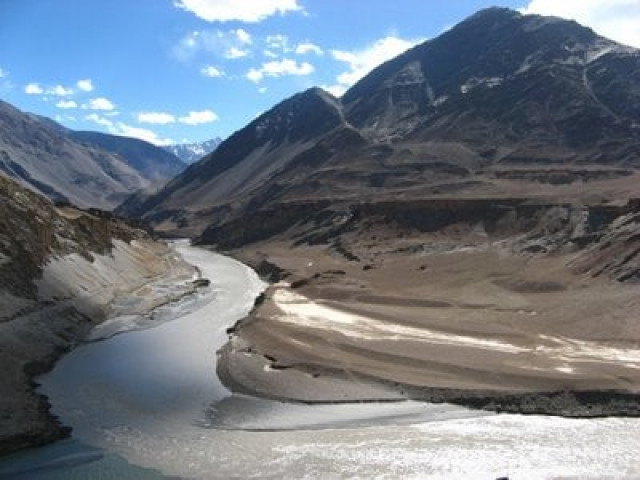Punjab shares half of its water with Sindh
Coldest April in 30 years slows glacier melt, threatening cotton sowing in Sindh.

In a rare move, Punjab decided to give half of its share of water from the Indus River system to Sindh to offset the impact of an expected shortage during crop sowing season.
Weather in the northern parts of the country has been unseasonably cold this year, resulting in slower melting of glaciers, decreasing the water flowing through the country’s rivers. On Saturday (today), the Tarbela dam on the Indus River is expected to reach its dead level of 1,378 feet, forcing the provinces to come together to find a solution to the impending water shortage.
Punjab’s decision to give half its share of water to Sindh was taken at a meeting of the Indus River System Authority (Irsa), a body that consists of representatives from the four provinces and the federal government and has final say over the distribution of water resources.
This April is the coldest in over 30 years, according to Irsa Chairman Rao Irshad Ali Khan. The cold weather is expected to last until April 17, after which glaciers are expected to begin their normal melting patterns. Irsa officials also expect rain in the next few days to stabilise river flows.
According to the agreement, despite the water shortage, Sindh’s share would be maintained at 45,000 cubic feet per second (cusec) to facilitate the province’s cotton growing season. Punjab’s cotton sowing season begins in May, and Punjab will be compensated with extra water supply then, according to Irsa officials.
Sindh will be able to maintain its levels after Punjab gave up half of its share of 33,000 cusecs. Punjab would provide water out of its share from the Chashma-Jhelum canal and the Indus River.
Rao Irshad said that despite an almost 50 per cent reduction in Punjab’s share, the reduced water flows will be sufficient to meet the needs of the largest province. However, he pointed out that water management would be made easier with new dams.
“Had a single planned dam materialised, the county would have at least one million acre feet (MAF) surplus water at this point in time,” said the Irsa chairman.
An Irsa advisory committee earlier this month determined that 118 MAF of water would be available in the reservoirs for the kharif season and there would be no water shortage. Out of that 72 MAF, water would be distributed among the provinces according to their share and 22 MAF water would be released downstream from Kotri, the last major barrage on the Indus River before it flows into the Arabian Sea.
The lower water flows in rivers are also impacting hydroelectric power generation. The country has an installed capacity of 6,555 megawatts of hydroelectric power but only 3,051 MW is being generated, according to the Pakistan Electric Power Company (Pepco).
Published in The Express Tribune, April 9th, 2011.



















COMMENTS
Comments are moderated and generally will be posted if they are on-topic and not abusive.
For more information, please see our Comments FAQ